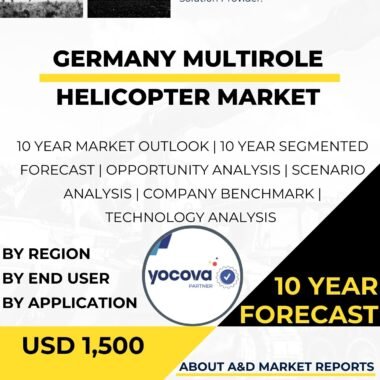Description
The China unmanned ground vehicles (UGVs) market has experienced significant growth and development in recent years. With China’s focus on enhancing its military capabilities, improving surveillance and reconnaissance, and reducing risks to personnel, there has been a substantial demand for advanced UGVs. This market analysis provides an overview of the China UGV market, including key players, market drivers, challenges, and future prospects.
The China UGV market is characterized by the presence of both domestic and international players. Domestic companies, such as China North Industries Group Corporation (NORINCO), Beijing Zhongzi Yanjing Auto Co., Ltd., and Harwar Intelligent Technology Co., Ltd., have made significant contributions to the development, production, and supply of UGVs. These companies have invested in research and development to enhance the capabilities of their UGVs and meet the specific requirements of the Chinese military.
International players, including renowned defense technology manufacturers such as General Dynamics Corporation, Lockheed Martin Corporation, and Rheinmetall AG, have also established collaborations and partnerships in China. These partnerships have facilitated technology transfer, knowledge exchange, and joint development programs, contributing to the advancement of UGV capabilities in China.
One of the primary drivers is China’s focus on enhancing its military capabilities and improving surveillance and reconnaissance. UGVs play a crucial role in augmenting the capabilities of military forces, providing situational awareness, and conducting surveillance and reconnaissance missions in complex and dangerous environments.
Furthermore, the need for reducing risks to personnel in hazardous environments has fueled the demand for UGVs in China. UGVs can be employed in various military operations, including mine clearance, explosive ordnance disposal (EOD), and reconnaissance in hazardous areas. By deploying UGVs in these operations, China can significantly reduce the risks faced by personnel and enhance operational safety. As China aims to protect its military personnel, improve operational efficiency, and reduce casualties, the demand for UGVs has increased.
Technological advancements have played a crucial role in the growth of the China UGV market. Domestic companies have focused on developing indigenous UGVs with improved mobility, endurance, payload capacity, and sensor capabilities.
China has successfully developed and deployed advanced UGVs, such as the NORINCO Sharp Claw UGV, which provides reconnaissance and surveillance capabilities for military operations. The development of mine-clearing UGVs, such as the NORINCO Type-59, has enhanced China’s capabilities in clearing landmines and explosive remnants of war. Additionally, EOD UGVs, such as the Harwar HD-1, have been developed to conduct safe and effective disposal of explosive threats.
Another driver of the China UGV market is the civilian sector, including applications in fields such as agriculture, transportation, and infrastructure maintenance. UGVs have found applications in autonomous agriculture, logistics and delivery, and infrastructure inspection. China’s growing interest in autonomous systems and smart cities has created a demand for UGVs in non-military applications. The development of UGVs for civilian use provides opportunities for technology transfer and commercialization, further driving the growth of the UGV market in China.
However, the China UGV market also faces certain challenges. One of the primary challenges is the need for continuous investment in research and development to stay ahead of evolving technologies, emerging operational requirements, and changing battlefield environments. As adversaries develop more advanced countermeasures and seek to neutralize UGVs, China must invest in innovation and advanced technologies to maintain its UGV capabilities.
Additionally, the market faces challenges related to international export restrictions and arms control regulations. The development and export of UGVs are subject to strict regulations due to security concerns and international agreements. This can limit market opportunities and hinder collaboration with international partners.
Looking ahead, the future prospects for the China UGV market are promising. China’s commitment to military modernization, operational efficiency, and technological advancement will continue to drive investments in UGVs. Ongoing research and development efforts, collaborations between domestic companies and international partners, and the integration of emerging technologies, such as artificial intelligence, robotics, and advanced sensor systems, are expected to result in the introduction of more advanced and capable UGVs.
The integration of artificial intelligence and advanced sensor systems may shape the future of the market. Artificial intelligence algorithms can enhance the autonomy and decision-making capabilities of UGVs, enabling them to adapt to dynamic battlefield conditions. Advanced sensor systems, including LiDAR, radar, and thermal imaging sensors, can improve situational awareness, perception, and object detection capabilities for UGVs, enhancing their operational effectiveness.
In conclusion, the China UGV market has witnessed significant growth driven by the country’s focus on military modernization, surveillance and reconnaissance capabilities, and risk reduction for personnel. Technological advancements, collaborations between domestic and international players, and the government’s commitment to indigenous defense capabilities have contributed”




